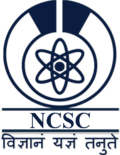Green Campus
Flora & Fauna on the campus:
Flora (plant life) and Fauna (animal life) are significant part of our ecosystem, keeping the balance of oxygen & carbon dioxide in the air, providing food & medicines, boosting local economy and enhancing overall beauty of the nature. Our campus is blessed with rich variety of flora providing best habitat for avifauna (Birds life).


Utilization of Renewable energy:
We have installed roof top solar on terrace of NCSC building, producing electricity for all our need, from clean source of solar radiation.
| Installed capacity of Roof top solar | Average electricity produced/month | Average electricity consumption/month | Reduction in CO2 emission/year |
| 60 kw | 8500 units | 8000 units | 85000 kg |
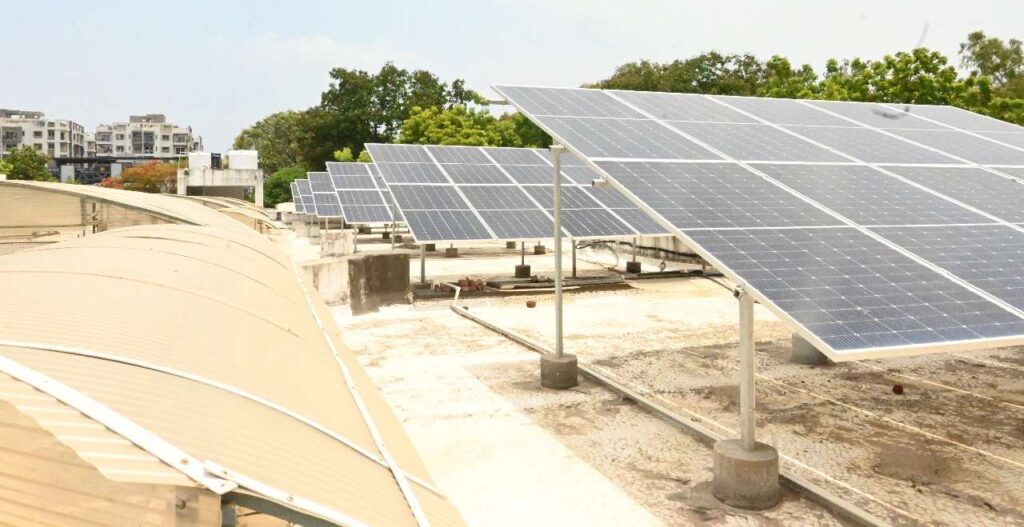
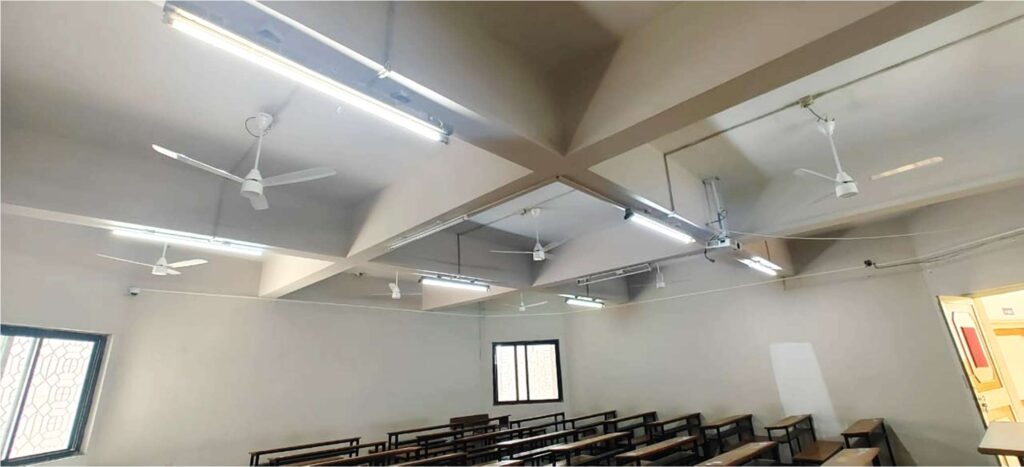

Implementing Energy Efficiency Measures:
Replacing lighting fixtures and fans with more energy efficient alternatives. Presently, 60 no. of fans are replaced with BLDC fans, which can save 60% power compared to normal fans and subsequently, all fans are to be replaced with BLDC fans. Similarly, all lights are replaced with LED lights in place of fluorescent tube-lights, CFL or tungsten bulbs.
Water Conservation Measures:
Considering 2000 students & staff on campus and requirement of 45 liters per head (as per IS 1172), total water requirement on campus can be considered as 90,000 liters/day. Water meters are installed at two tube wells to measure total quantity of water pumped out, which is actual daily consumption & it is equal to average 70,000/- liters/day (2.5 crore
liters/annum).


Rain water Harvesting:
Considering average rainfall of 750 mm/year and 15 acres (60,000 m2) of campus area, total rain water quantity falling on campus is 45000 m3 (4.5 crore liters). It is planned not to allow this rain water to flow out of campus, to the drain outside, eventually meeting the saline water of Narmada River, instead, this water will be percolated into the ground, to recharge the ground water. This will help to raise the ground water table and improve the quality of ground water. All rain water collected in front 5 acres of land, which include two college buildings & paved area, will be percolated to ground with the help of two percolation wells. 10 acres of backside area, which include playground, canteen and other open area with plantation, rain water will be collected in small pond, eventually percolating to ground.
Pure water requirement for Chemistry Lab.:
For chemistry lab., normally we are using distilled water for preparing various chemical solutions. Since rain water has very little quantity of dissolved salts and it has been decided to use rain water for chemical solutions instead of distilled water. For this purpose, filtered rainwater from terrace is being collected in separate tank.
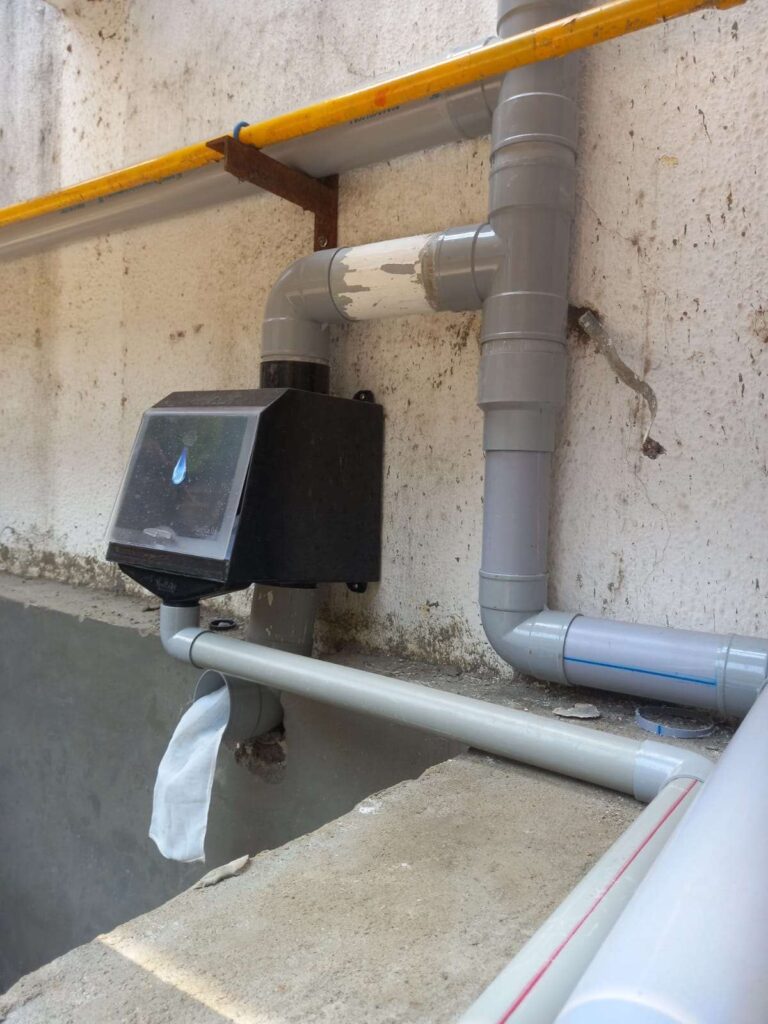
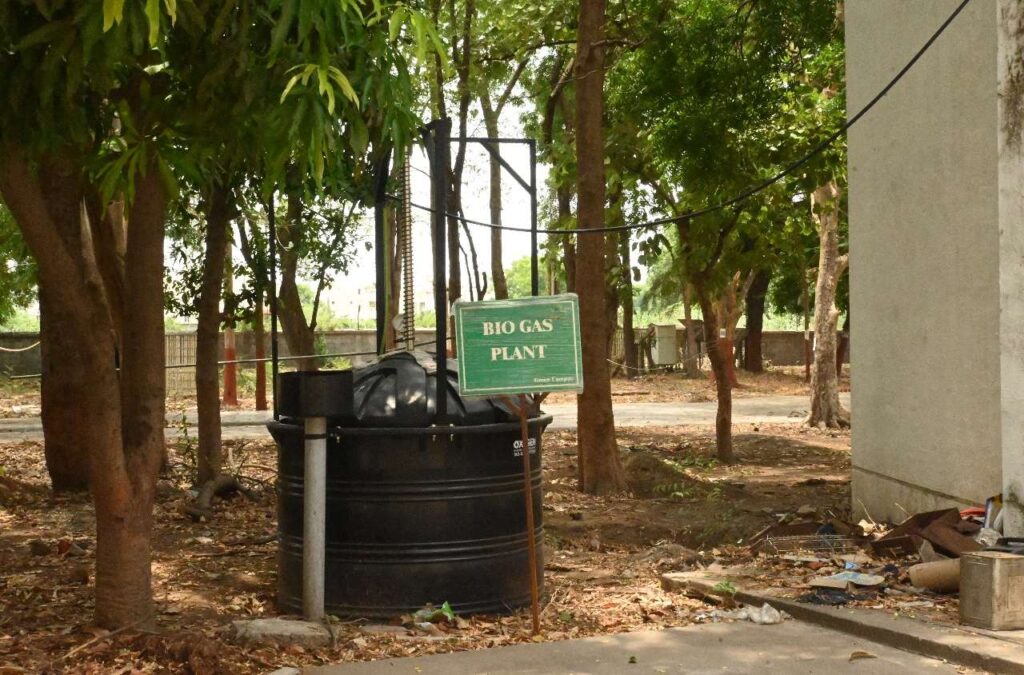
Biogas plant for food waste on campus:
2 m3 floating dome biogas plant has been installed behind the canteen, mainly to convert food waste generated from canteen into biogas, to be used for canteen kitchen.
Composting facility for plant waste:
2 composting pits of the size 3m x 6m x 1m, have been constructed to convert all garden waste, leaves, etc. into organic compost, to be used as fertilizer required for our green campus.
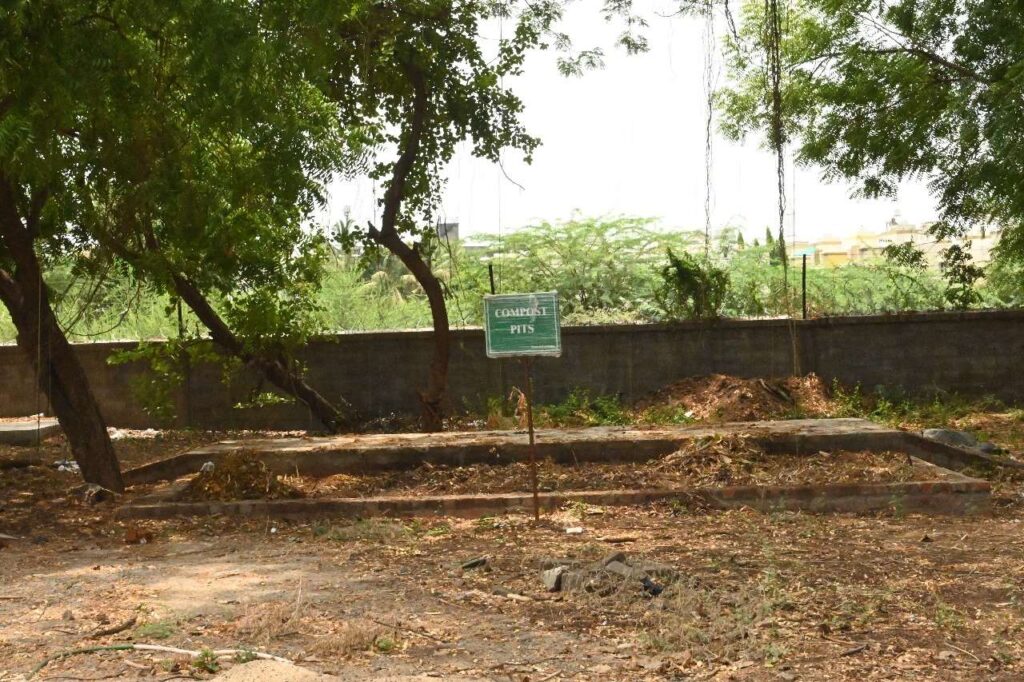
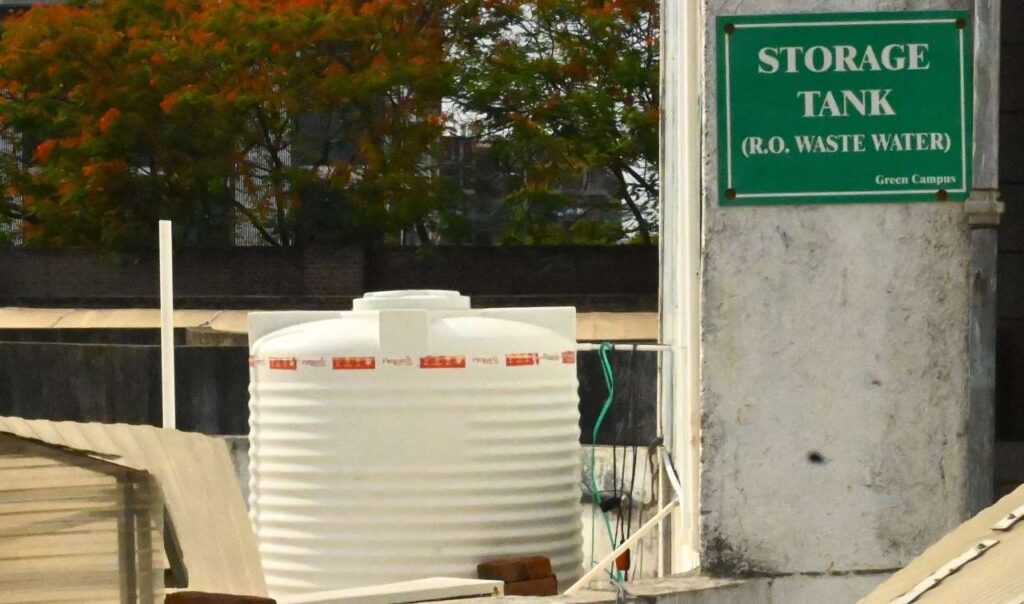
RO wastewater :
For drinking water requirement of about 4000 liters/day, we have RO water plant installed on terrace. Water from tube well has around 1300 TDS and water purified from RO plant has about 300 TDS. For every 1 liter of filtered water, an average RO water purifier wastes
approximately 3 liters of water. So in our case, about 12000 liters of wastewater every day. We have installed a storage tank for this RO waste water on terrace. This RO waste water is being used for all our requirement in washrooms and in Chemistry lab.
